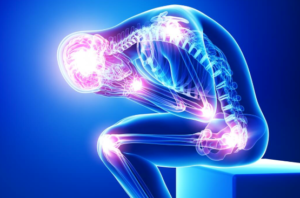Pain affects millions of people in the United States, disrupting daily activities and reducing quality of life. Chronic pain conditions can persist for months or years, making routine tasks difficult. Pain management provides structured approaches to reduce discomfort and restore function through various medical interventions and personalized treatment plans. Understanding the types, causes, and available treatments for pain helps patients make informed decisions about their care.
What Are the Different Pain Types?
Pain manifests in various forms, each requiring specific management approaches. Acute pain typically results from injury, surgery, or illness and resolves as healing occurs. This type of pain serves a protective function by alerting the body to potential damage.
Chronic pain persists beyond normal healing time, lasting months or years. This category includes conditions like arthritis, fibromyalgia, and neuropathic pain that may not respond to standard treatments. Chronic pain frequently necessitates specialized pain management interventions to achieve relief.
What Causes Chronic Pain?
Chronic pain develops through multiple pathways and underlying conditions. Degenerative joint diseases like osteoarthritis cause ongoing inflammation and tissue breakdown, leading to persistent discomfort. Spinal conditions, including herniated discs, spinal stenosis, and facet joint dysfunction, create mechanical pain that worsens with movement.
Nerve injuries from trauma, diabetes, or autoimmune conditions can trigger long-lasting neuropathic pain. Previous surgeries may result in the formation of scar tissue that compresses nerves or restricts normal tissue function. Inflammatory conditions such as rheumatoid arthritis create systemic pain through immune system dysfunction. Some chronic pain conditions have unknown causes, making diagnosis and treatment more complex.
What Does Pain Management Involve?
Pain management encompasses various interventional procedures designed to target specific sources of pain. Epidural steroid injections deliver anti-inflammatory medications directly into the epidural space surrounding spinal nerves. These injections reduce inflammation and provide relief for conditions like herniated discs and spinal stenosis.
Advanced techniques include radiofrequency neuroablation, which uses heat energy to interrupt pain signals from specific nerves. Spinal cord stimulator therapy involves implanting devices that deliver electrical impulses to modify pain perception. Peripheral nerve blocks target specific nerve groups, while radiofrequency ablation creates controlled lesions to reduce pain transmission. Joint injections deliver medications directly into affected joints for targeted relief.
How Do Doctors Personalize It?
Medical professionals conduct comprehensive evaluations to develop individualized treatment plans. This process begins with detailed medical histories that identify pain patterns, triggers, and previous treatments. Physical examinations assess range of motion, strength, and specific pain locations.
Diagnostic imaging studies, including X-rays, MRI, or CT scans, help identify structural abnormalities contributing to pain. Diagnostic injections may be performed to confirm specific pain sources before implementing targeted treatments. These procedures provide valuable information about which structures are responsible for generating pain symptoms.
Treatment selection depends on the location, severity, underlying causes of pain, as well as patient preferences. Some patients may benefit from single interventions, while others require combination approaches. Medical professionals monitor treatment responses and adjust strategies based on patient outcomes and changing conditions.
Find Relief Today
Pain management offers multiple pathways to reduce discomfort and improve function for people experiencing acute or chronic pain conditions. Understanding the different types of pain and the available treatments helps patients participate actively in their care decisions. If you’re experiencing persistent pain that affects your daily activities, consult with a pain management specialist to explore treatment options. Professional evaluation can identify specific pain sources and guide you toward appropriate interventions for your condition.















